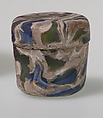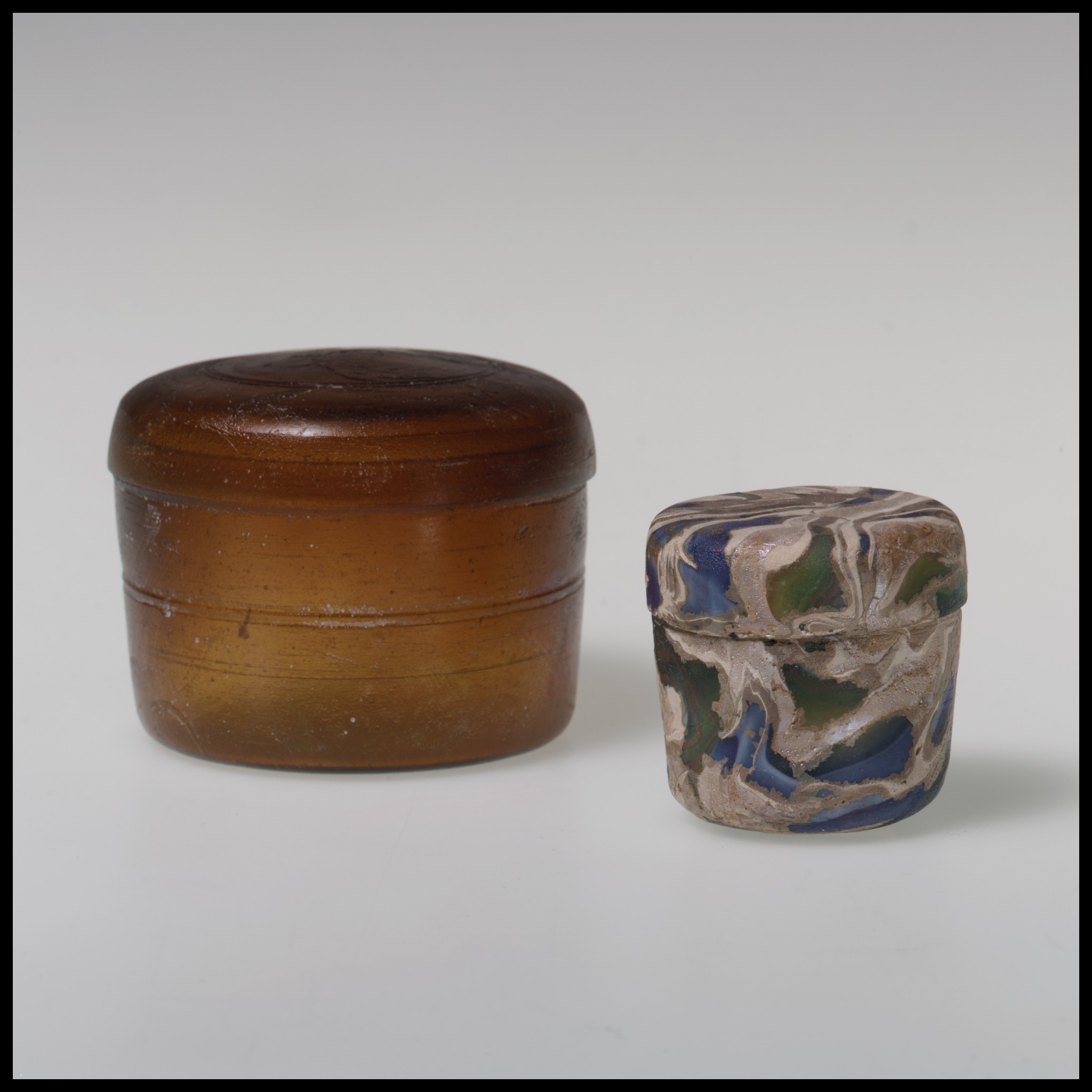Glass mosaic pyxis with lid
Both lid and pyxis in translucent cobalt blue, green, yellow, and turquoise blue, with opaque white.
Flat lid with rounded edge to vertical cylindrical sides; plain rim, tapering on inside, with fine ground bottom edge. Vertical rim to pyxis, tapering upward, with recessed band below to receive lid; slightly everted shoulder line; cylindrical side, tapering slightly downwards, with rounded edge to flat bottom.
Marbled mosaic pattern formed from serpentine lengths of canes in different colors with streaks of white, some overlapping to give different shades and colors.
Intact, but one small crack in edge of lid; dulling, pitting of surface bubbles, iridescence, and patches of thick creamy weathering; some silt-like encrustation on interior of lid and pyxis.
Rotary grinding marks on interior and exterior of pyxis. The lid fits perfectly on the raised ledge below the rim of the pyxis.
Small bottles and lidded pyxides (boxes) in mosaic and luxury gold-band glass were made during the Julio-Claudian period. But as glass-blowing became more widespread during the mid-1st century, they were quickly supplanted by free-blown versions, often in more transparent glass that allowed one to see the contents.
Due to rights restrictions, this image cannot be enlarged, viewed at full screen, or downloaded.
This artwork is meant to be viewed from right to left. Scroll left to view more.



